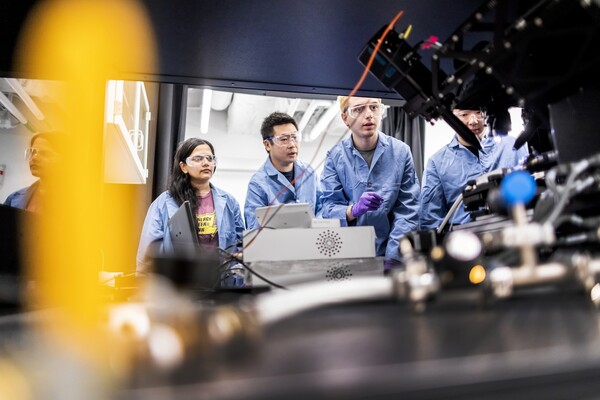
nocred
PHILADELPHIA - Applying physical stress to cells, researchers at the University of Pennsylvania School of Engineering and Applied Science have demonstrated that everyday forces can alter the structure of proteins tucked within cells, unfold them and expose new targets in the fight against disease.
The findings for both simple red blood cells and more versatile stem cells show that hidden and folded parts of proteins can be exposed by physical strain, not just by chemical reaction. From there, proteins can be labeled and mapped, increasing the understanding of cellular behavior and unlocking novel targetable sites for drugs that might interact with these active proteins to treat disease.
The study appears in the current issue of the journal Science.
Cells are exposed to forces every minute of every day. Some forces are exerted by the flow of bodily fluids, such as blood streaming through arteries, while other forces are generated by cells as they crawl and contract in tissue.
Penn researchers used force to induce changes in the structures of cytoskeletal proteins and, employing fluorescent dyes, labeled proteins sequentially, visualized them and molecularly pinpointed the newly exposed parts of proteins. By forcing proteins to unfold, hidden binding sites were revealed. Multicolor maps were generated that revealed locations of protein sites not accessible when the cell remained static and relaxed.
"We were motivated to probe molecular mechanics within cells in part by our recent findings on stem cells that show they generate their own forces, switching on and off development of different cell types," Dennis Discher, professor of chemical and biomolecular engineering at Penn, said.
Proteins are the molecular instigators for almost every biologic action and reaction in living things. Their assembly and reactions are the foundation of processes from the division of cells to the complex chain of events that result in the apparently simple blink of an eye. Pathophysiological processes such as heart disease, anemia and even the rigidification of breast tumors often reflect changes in protein organization and assembly that adversely affect static and dynamic forces in, on and around cells. Protein targeting is the strategy commonly employed to create new drugs to deal with those adverse affects.
Cytoskeletal proteins, well known amongst cell biology and biophysics researchers, are a leading cause of a large number of diseases that "mess up" proteins, sometimes misfold them and often disrupt their natural interactions as well as those of cells.
If stem cells are to provide hope for therapy, they will rely on the proper assembly of many cytoskeletal proteins that achieve the right levels of flexibility and force-generation. Cytoskeletal pliability within cells under stress has been a matter of guesswork in the past, however, and so a better understanding, achievable with the molecular mapping strategy, opens up new approaches for targeting specific cellular interactions.
Future efforts will focus in part on folding of cytoskeletal proteins that are targets of gene therapies and also on clarifying signaling processes in cells that couple to protein folding. The latter processes often entail modification of proteins with phosphates and are essential to how individual cells feel the forces exerted on them. Through a better understanding of how forces localize and unfold proteins to propagate cascades of protein phosphorylation and cell activation, new therapeutic strategies may emerge.
The study was conducted by Discher, Colin Johnson and Christine Carag of Penn's School of Engineering and Applied Science, as well as Hsin-Yao Tang and David Speicher of The Wistar Institute.
The research was supported by the National Institutes of Health, the National Science Foundation and the Muscular Dystrophy Association.
Jordan Reese

nocred

Image: Pencho Chukov via Getty Images

The sun shades on the Vagelos Institute for Energy Science and Technology.
nocred

Image: Courtesy of Penn Engineering Today